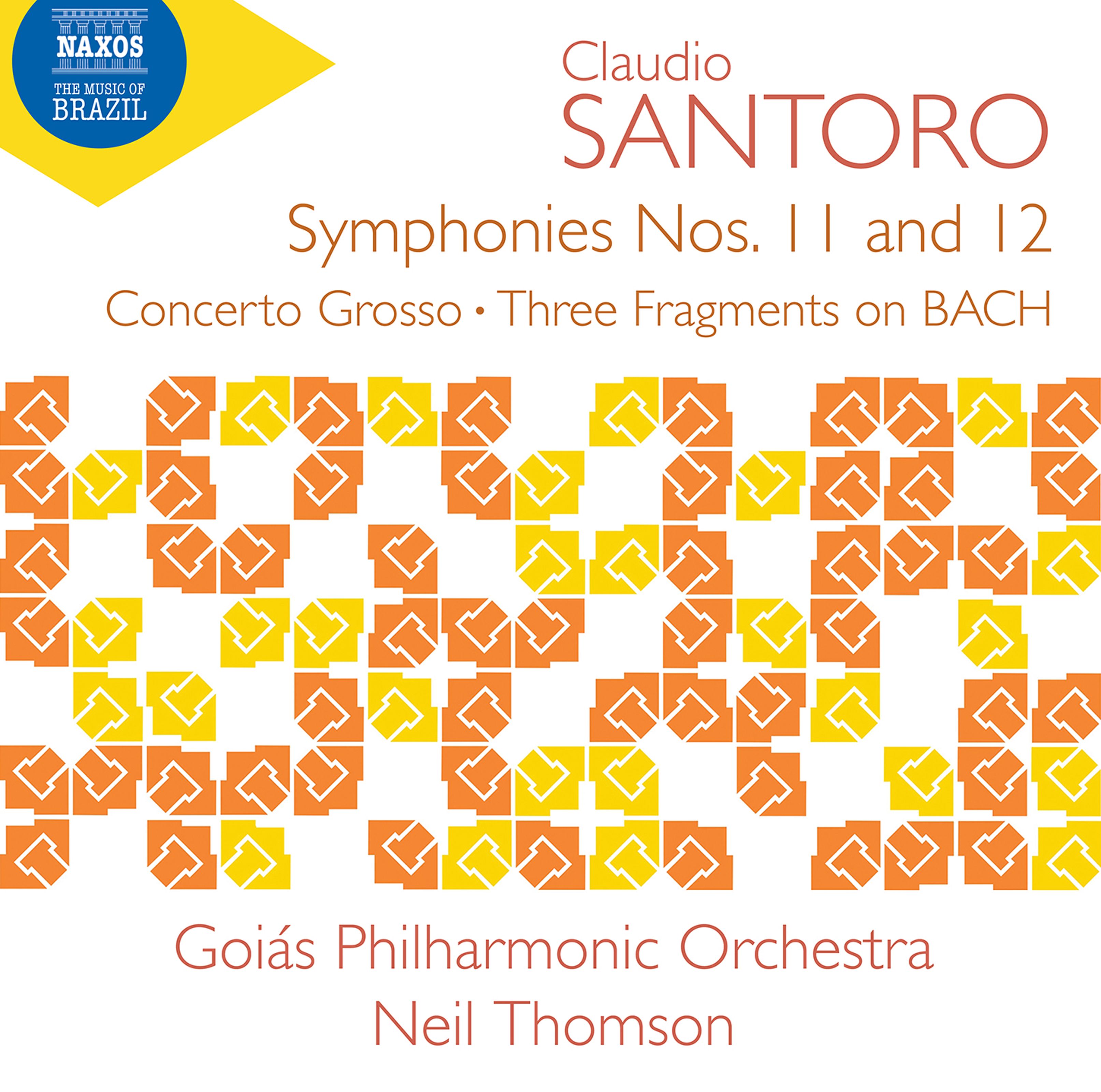SANTORO Symphonies Nos 11 & 12; Concerto Grosso
View record and artist detailsRecord and Artist Details
Genre:
Orchestral
Label: Naxos
Magazine Review Date: 01/2023
Media Format: CD or Download
Media Runtime: 69
Mastering:
DDD
Catalogue Number: 8 574406

Tracks:
| Composition | Artist Credit |
|---|---|
| Concerto grosso |
Cláudio Santoro, Composer
Abner Landim, Violin Cleverson Cremer, Viola Emerson Nazario, Cello Goiás Philharmonic Orchestra Neil Thomson, Conductor Simone Elenciuc, Violin |
| Symphony No 11 |
Cláudio Santoro, Composer
Goiás Philharmonic Orchestra Neil Thomson, Conductor |
| 3 Fragmentos sobre B-A-C-H |
Cláudio Santoro, Composer
Goiás Philharmonic Orchestra Neil Thomson, Conductor |
| Symphony No 12 'Concertante Symphony for 9 Soloists' |
Cláudio Santoro, Composer
Abner Landim, Violin Emerson Nazario, Cello Goiás Philharmonic Orchestra Hellington Gonçalves, Trombone Igor Yuri Vasconcelos, Horn Josué Felipe, Oboe Luciano Pontes, Viola Mauro Stahl Junior, Trumpet Neil Thomson, Conductor Patrick Viglioni, Clarinet Raul Menezes, Flute |
Author: Ivan Moody
Cláudio Santoro’s music always seems to grab the listener by the throat. He had such an instinct for gesture that, whichever stylistic phase he was in (he went through several), he always managed to call for attention in the most dramatic way possible. The Concerto grosso, dating from 1980, after the composer’s return to Brazil from Germany, is one of a number of hugely impressive works from his final decade, and after the expected attention-grabbing opening, provides an attractive and intriguing mixture of conventional writing and flashes of the cluster-laden, aleatoric periods of the past. It’s difficult to think of comparisons – Petrassi? Lopes-Graça? – but that is of small import.
Symphony No 11 dates from four years later and is a much darker work. Also in three movements, it inhabits a world of darkness and yearning, again characterised by those dramatic gestures that pull the listener in, and does so in spite of fast tempo markings for all three movements. The militaristic overtones of the middle movement might, in fact, suggest a certain black Shostakovian irony. There are elements of this in the finale, too, but I would certainly not want to give the impression that Santoro is incapable of lyricism. Three Fragments on BACH date from 1985 and were written for a German youth orchestra. Fragments they may be, but like the Symphony they are full of dark foreboding. In them Santoro has recourse to all the compositional techniques in his vast armoury to spin something mysterious and unexpected from the German composer’s name.
Symphony No 12 dates from two years later and redeploys concertante material from other works Santoro had written – indeed, its subtitle is ‘Sinfonia concertante for eight instruments and orchestra’. This fact confers on the work a quite different character from its predecessor. The concertante thread is very clearly preserved and there is a striking fascination with instrumental colour. The middle movement, featuring solo trumpet, once again evokes a martial style, and the dramatic finale brings together all the threads over a broad canvas. These impressive and rarely heard works are all played with absolute conviction and panache by the Gioás Philharmonic under Neil Thomson, and the recordings are crystal-clear.
Discover the world's largest classical music catalogue with Presto Music.

Gramophone Digital Club
- Digital Edition
- Digital Archive
- Reviews Database
- Full website access
From £8.75 / month
Subscribe
Gramophone Full Club
- Print Edition
- Digital Edition
- Digital Archive
- Reviews Database
- Full website access
From £11.00 / month
Subscribe
If you are a library, university or other organisation that would be interested in an institutional subscription to Gramophone please click here for further information.




